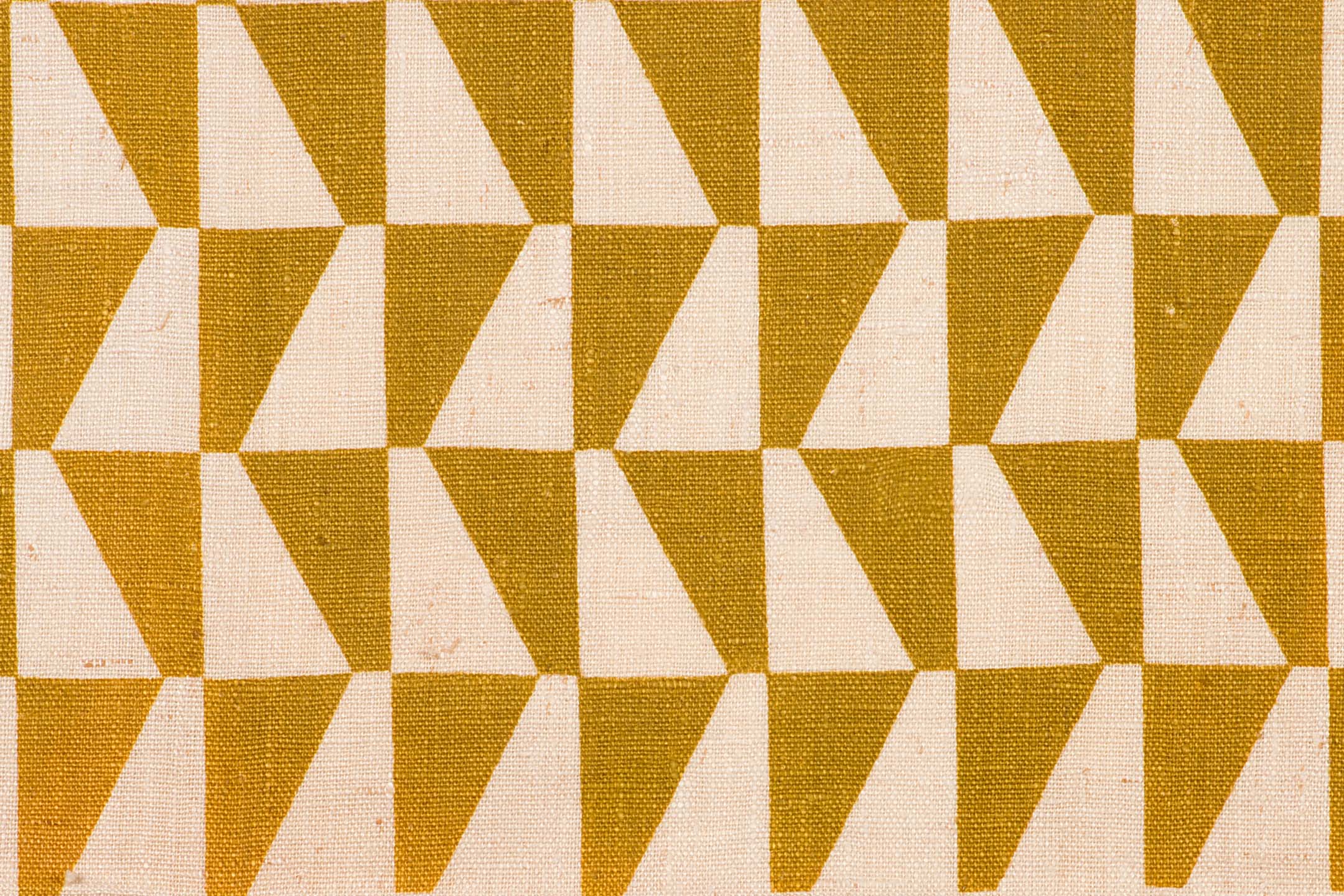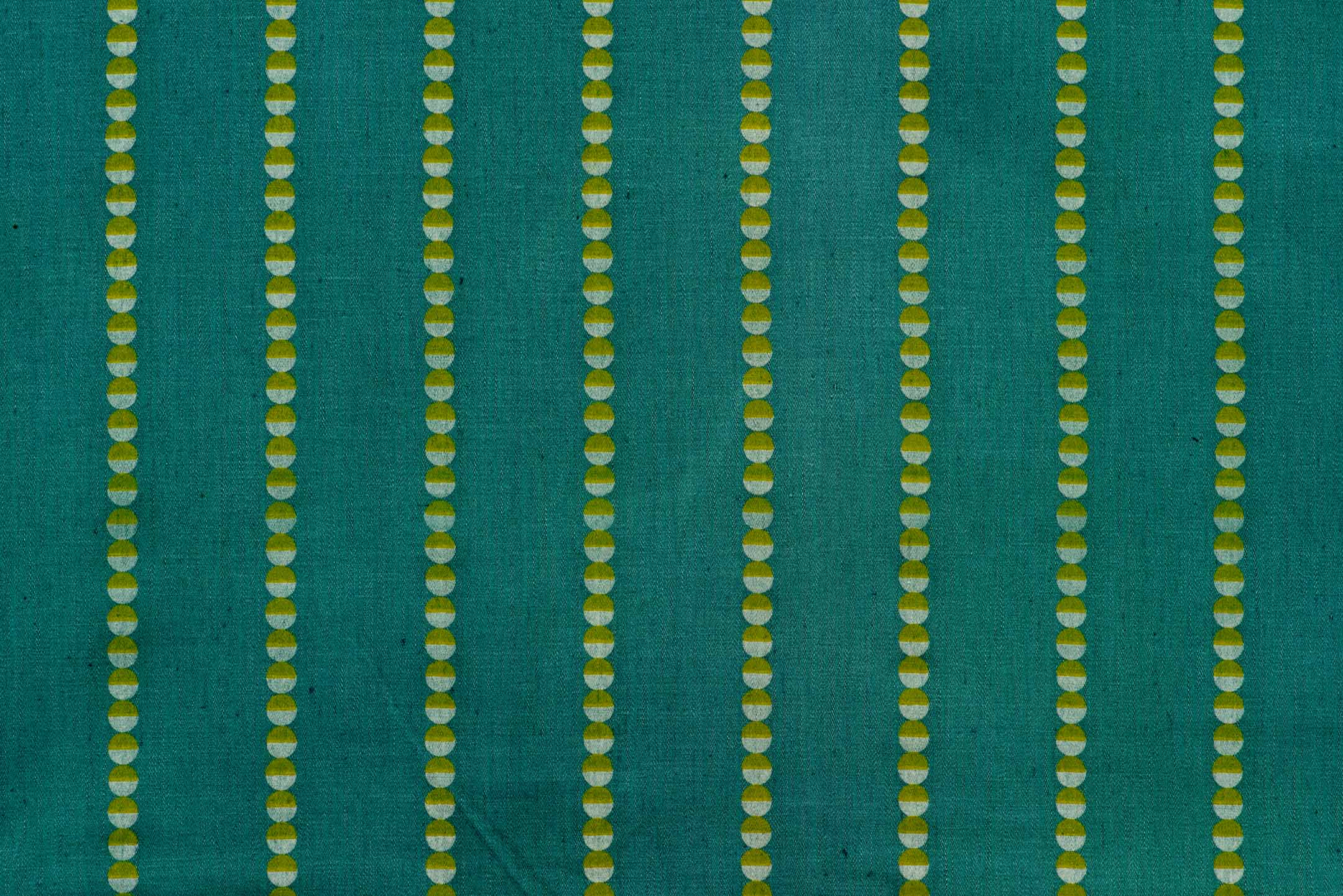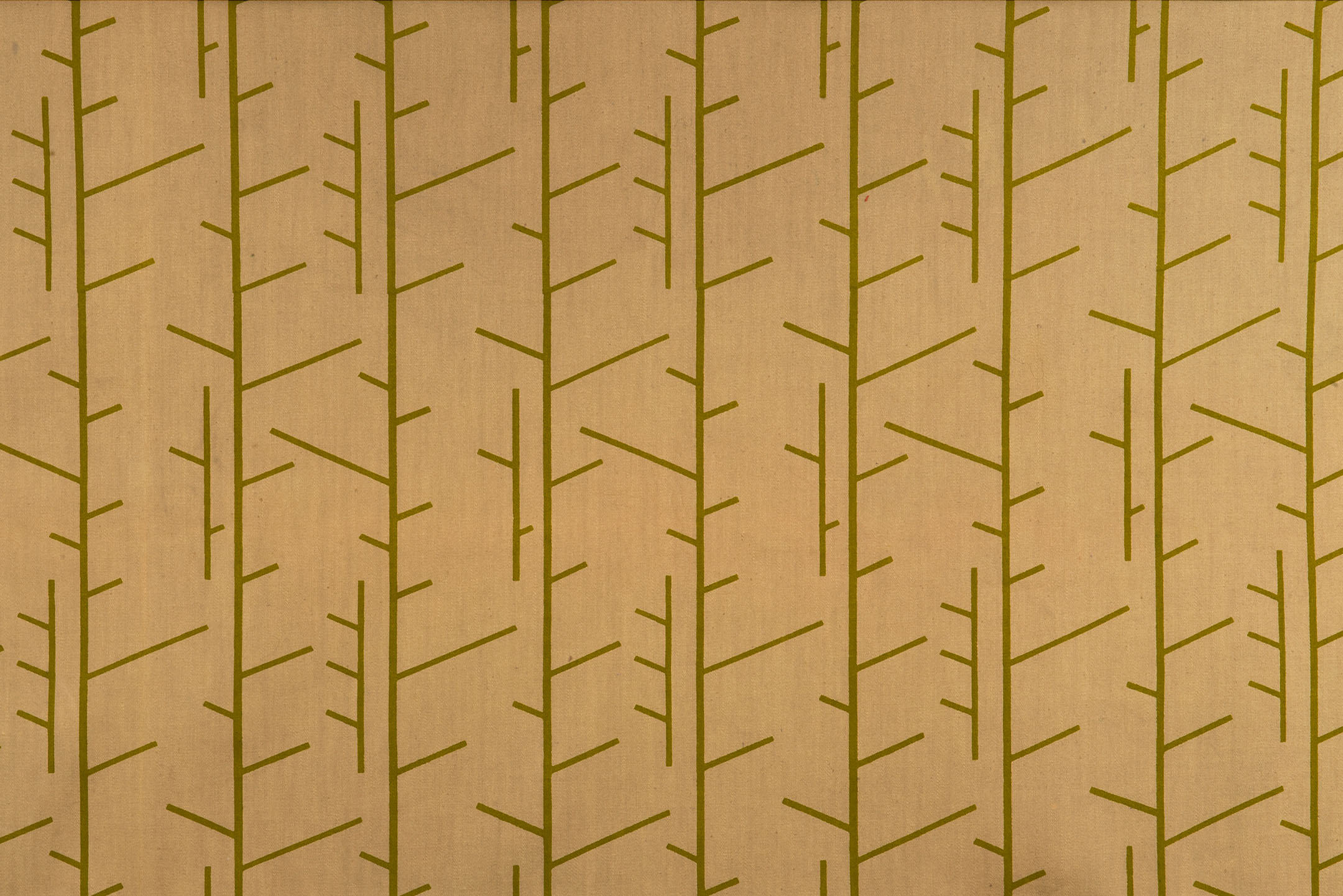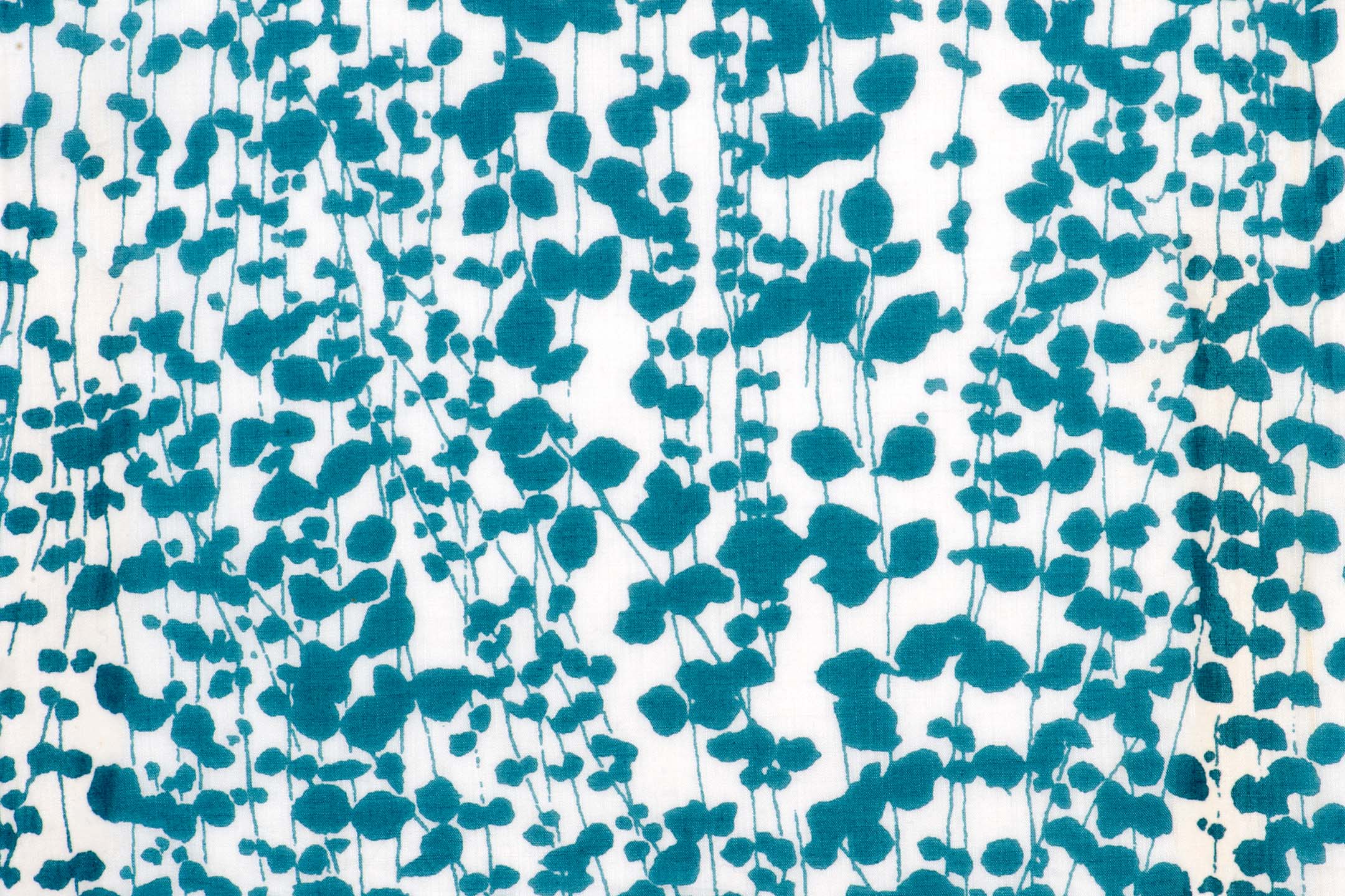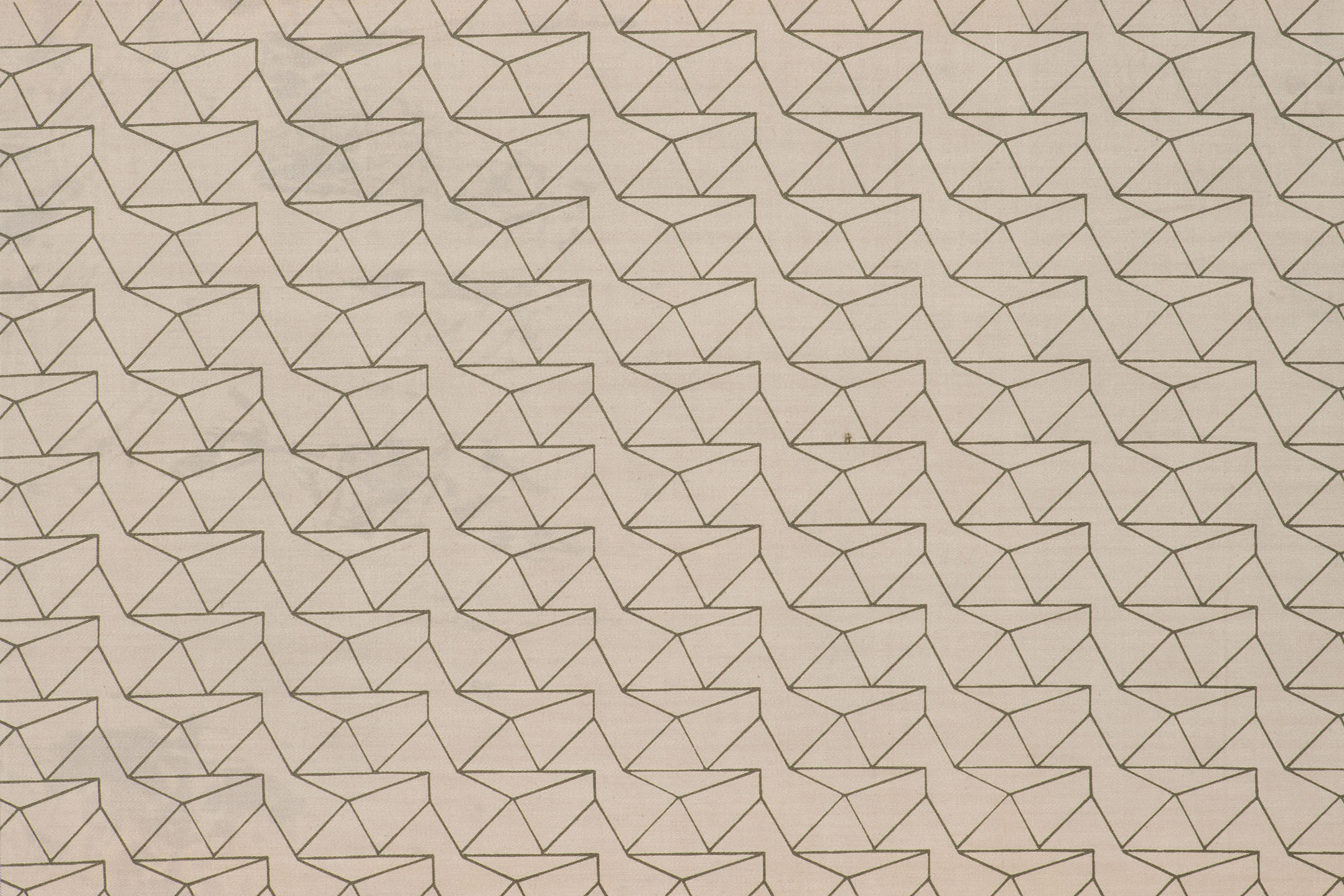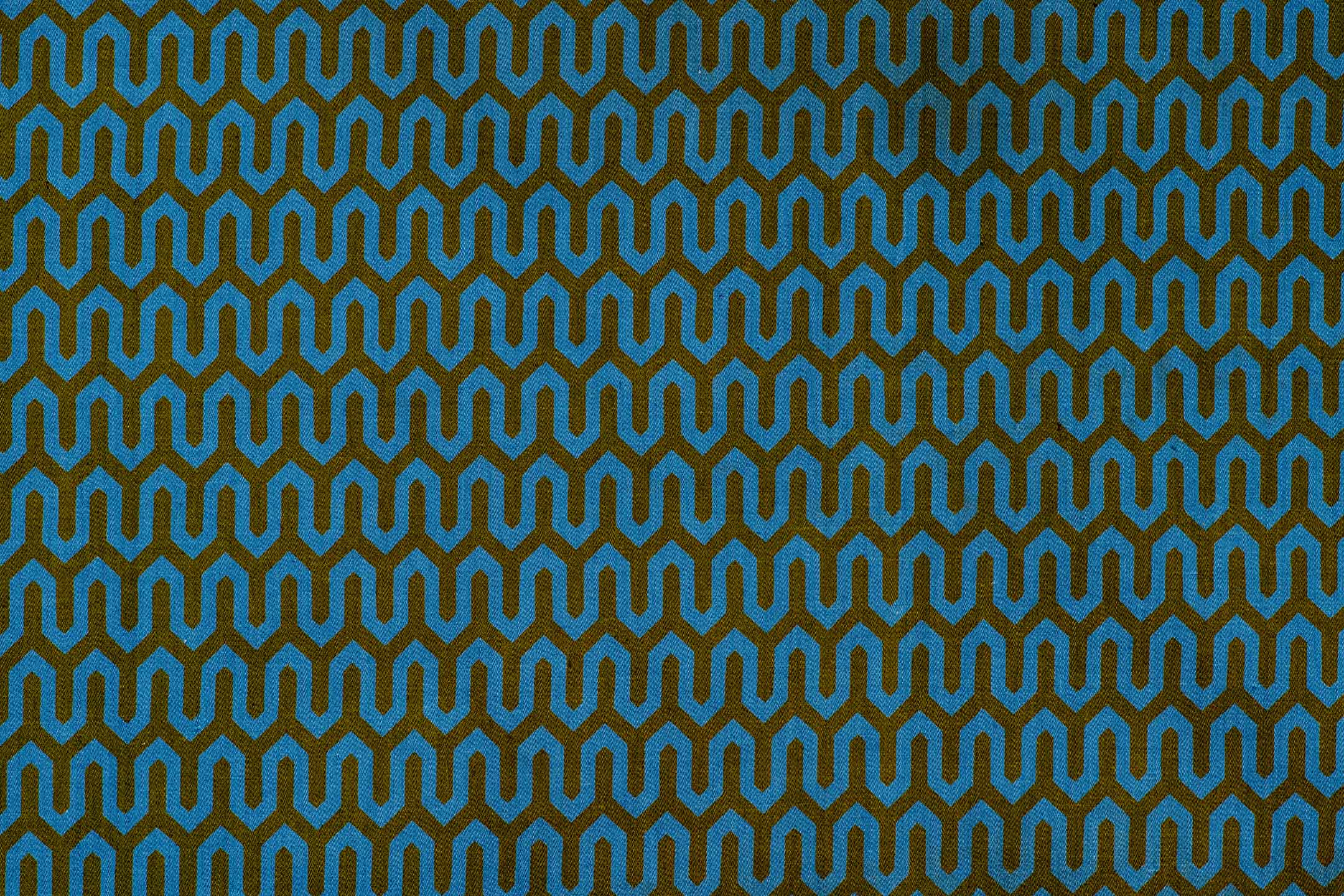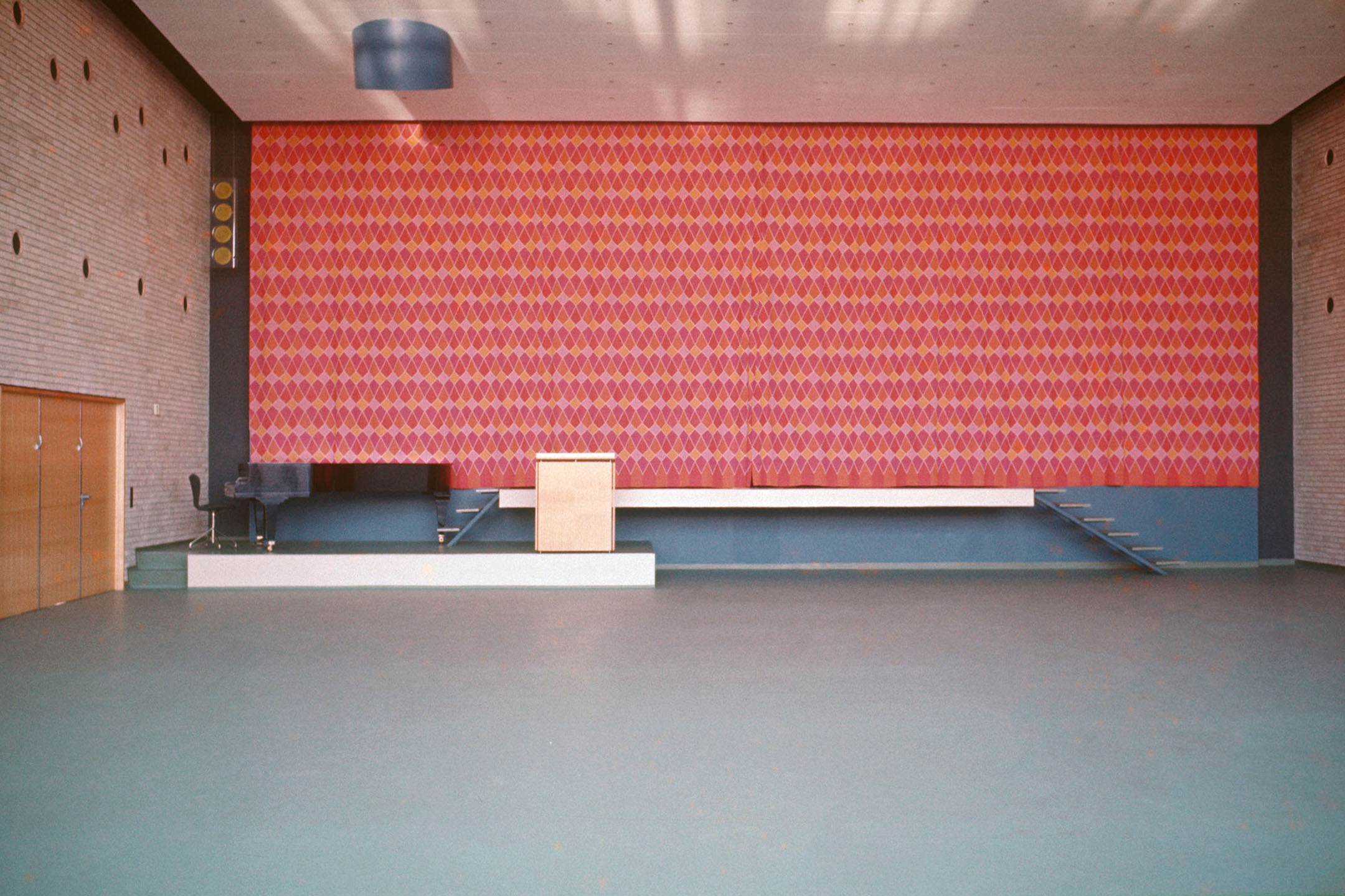During the 1950s and 1960s, Arne Jacobsen designed a range of textile patterns that were used on furnishing fabrics. Many of the patterns were also used in his architecture projects. Unlike the free, naturalist patterns he had designed during the time around the Second World War, these later patterns were strictly geometrical with a simple, graphic expression inspired by modern art.
In his large public and private architectural commissions Arne Jacobsen not only designed the architectural structure. He created comprehensive total designs with custom-designed furniture, lamps, fittings, plantings and, in many cases, custom-designed textile patterns. In some of his most comprehensive and significant commissions, such as the Munkegaard School from 1957 and SAS Royal Hotel (now Radisson Collection Royal Hotel) from 1960, patterned textiles are an important part of the larger, closely coordinated whole.
